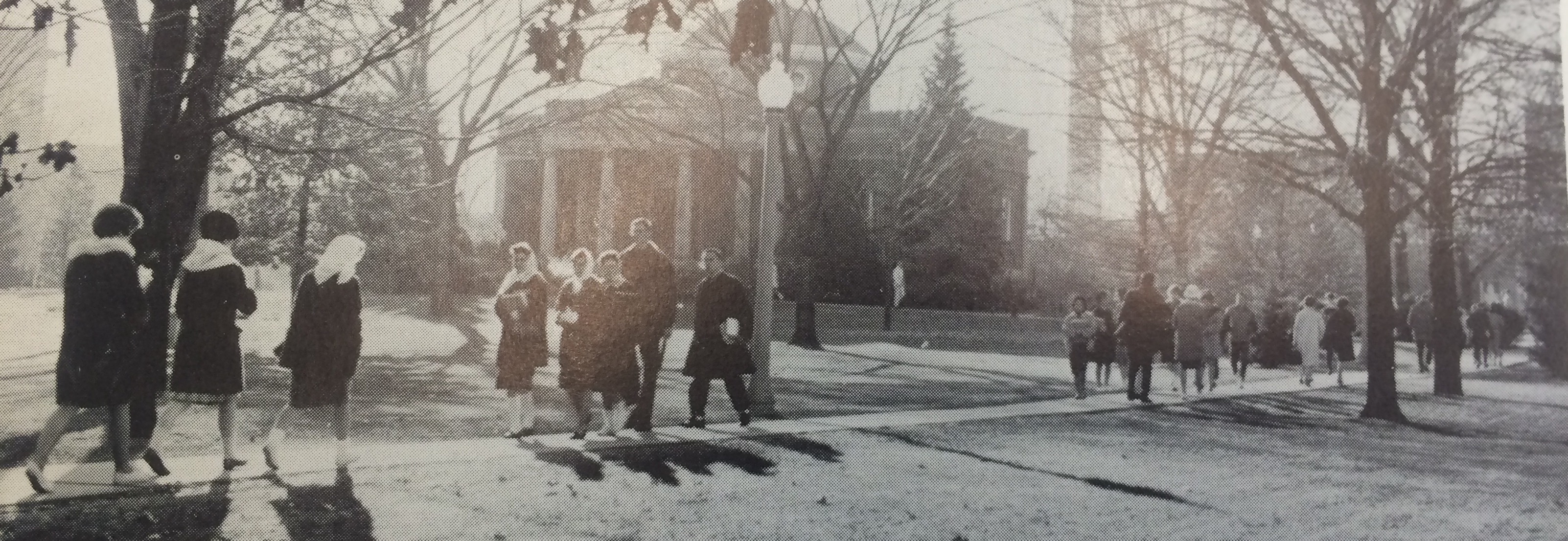In the 1950s, Truman State named was Northeast Missouri State Teachers College, but was most commonly known as Kirksville State Teachers College. The student handbooks of this decade make it clear that there were expectations for how students would present themselves publicly. There is nothing to suggest that the expectations of dress were “rules,” per se, meaning that they were not enforced, and students would not be punished for deviating from the stated expectations. Nonetheless, student handbooks throughout the decade explicitly stated how both men and women should dress in a variety of situations and locations. Here is an example from the Northeast Missouri State Teachers College Student Handbook 1950-1951:
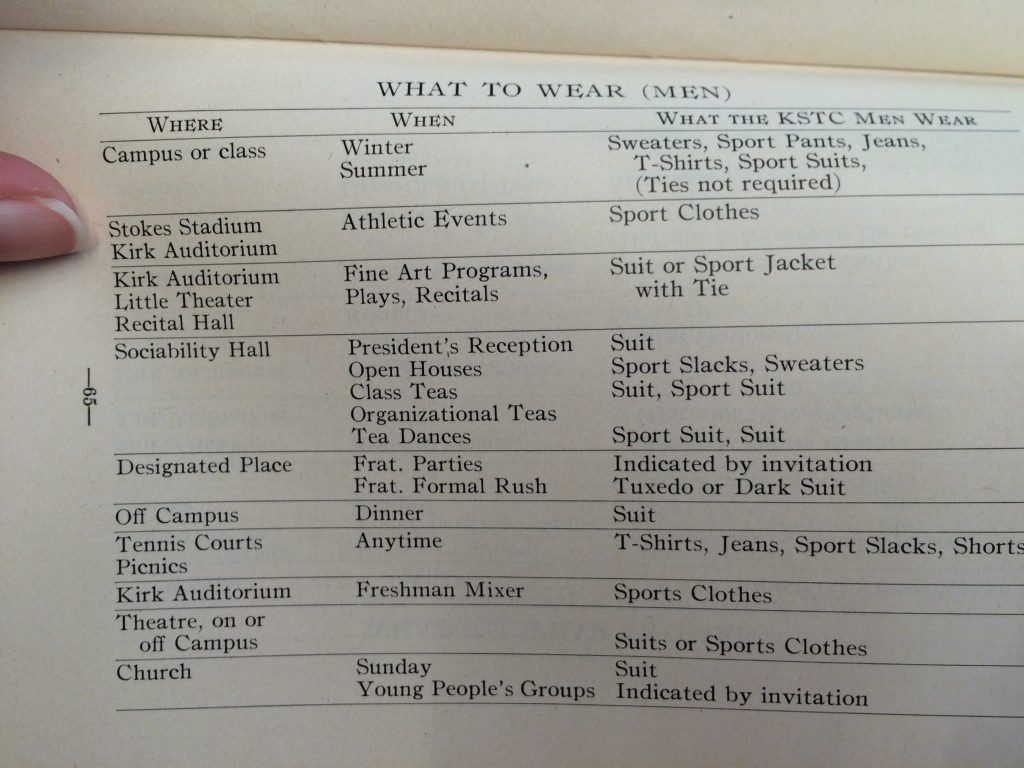
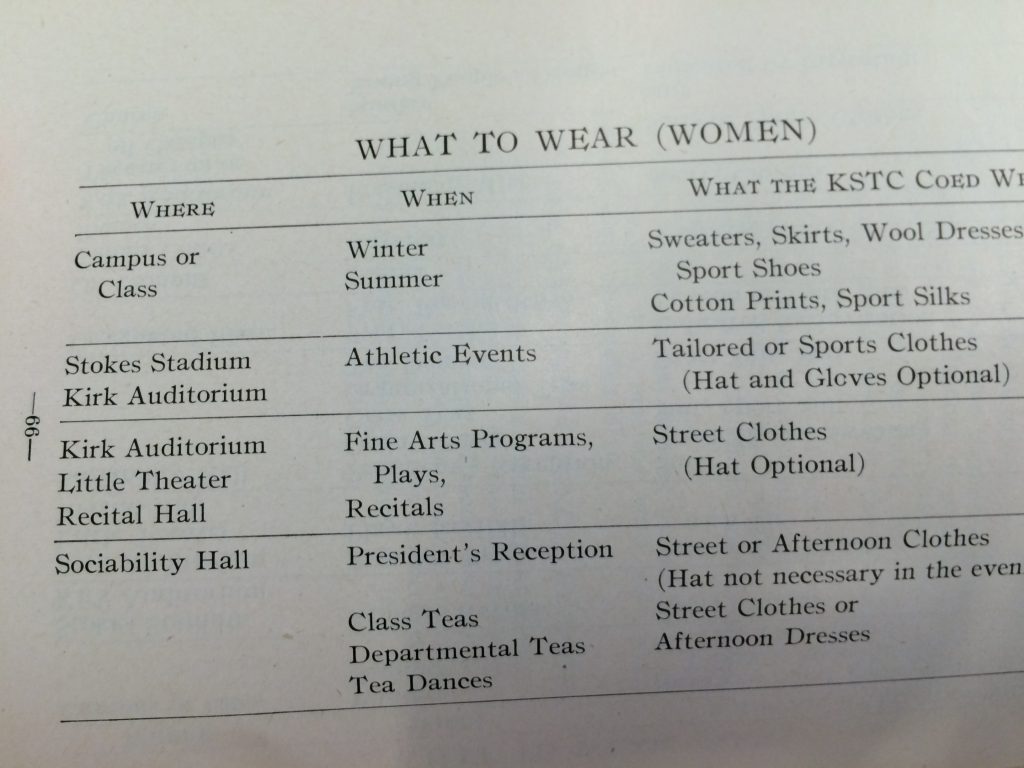
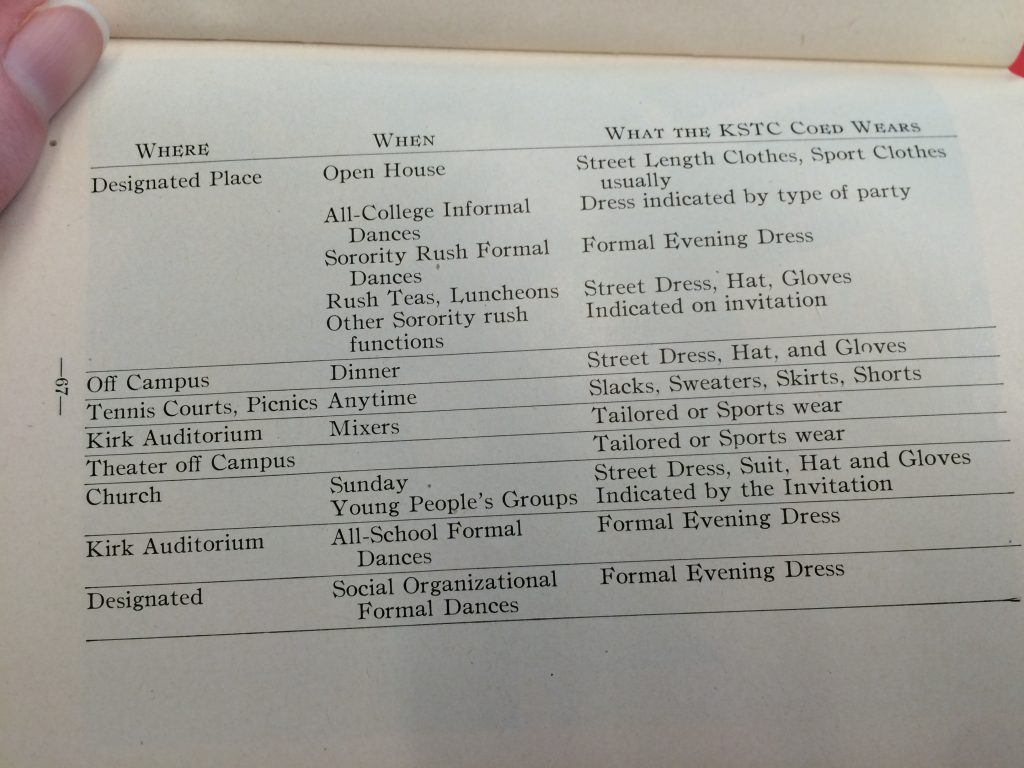
Note that there are two pages for women and only one for men. This same chart appears in all of the student handbooks of the decade. The pictures in the yearbooks suggest that these expectations were realistic and followed by most students. In an interview with an alumnus, Shirley Hogan, class of ’56, she said that she did not remember any kind of dress code on campus, and that how students dressed for class was “common sense.” The campus fashion was casual, and students were not concerned with showing off social status. On an average day for class, most students would wear a sweater with slacks for men, or a shirt for women.1 This is consistent with the expectations stated in the handbooks.
Jeans were beginning to become more popular at this time. Still, it was unusual for students to wear jeans to class. Typically, jeans were worn for outdoor activities.2 For instance, students, both men and women, wore jeans to the watermelon feed in 1954. That said, slacks were still worn by many men, such as the man on the far left.
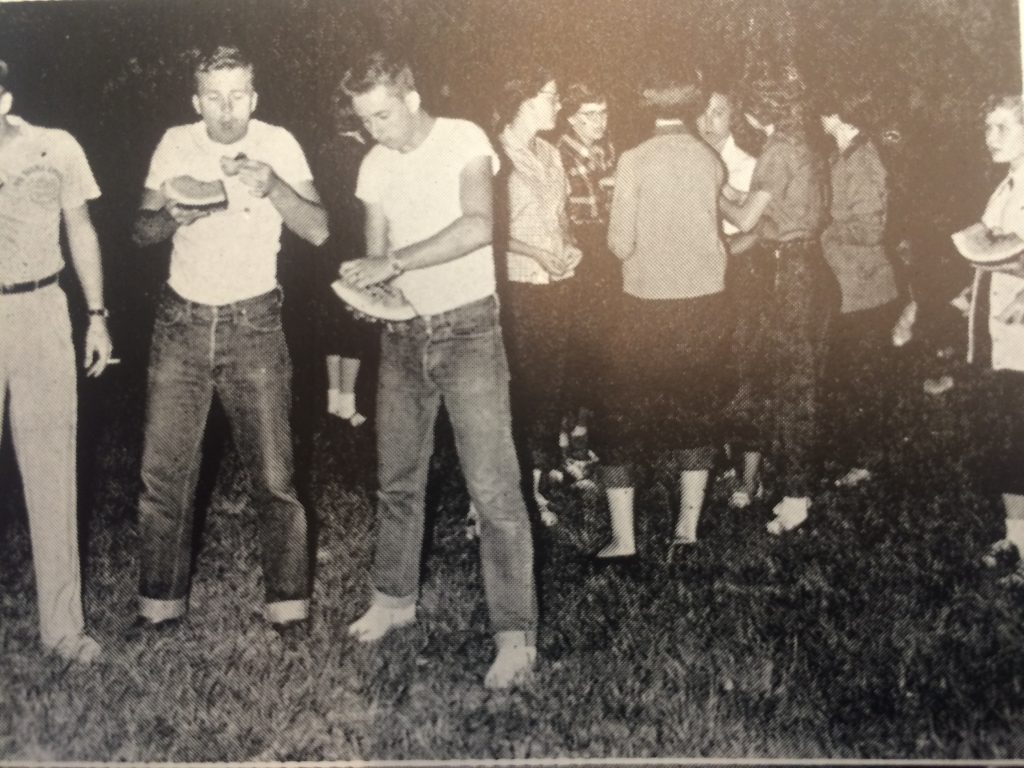
“The big fall watermelon feed.” Echo Yearbook, 1954.
Jeans were seen as a bit of a novelty. Ms. Hogan said that she rarely wore the pair of jeans that she had, but thought they were “neat.”3
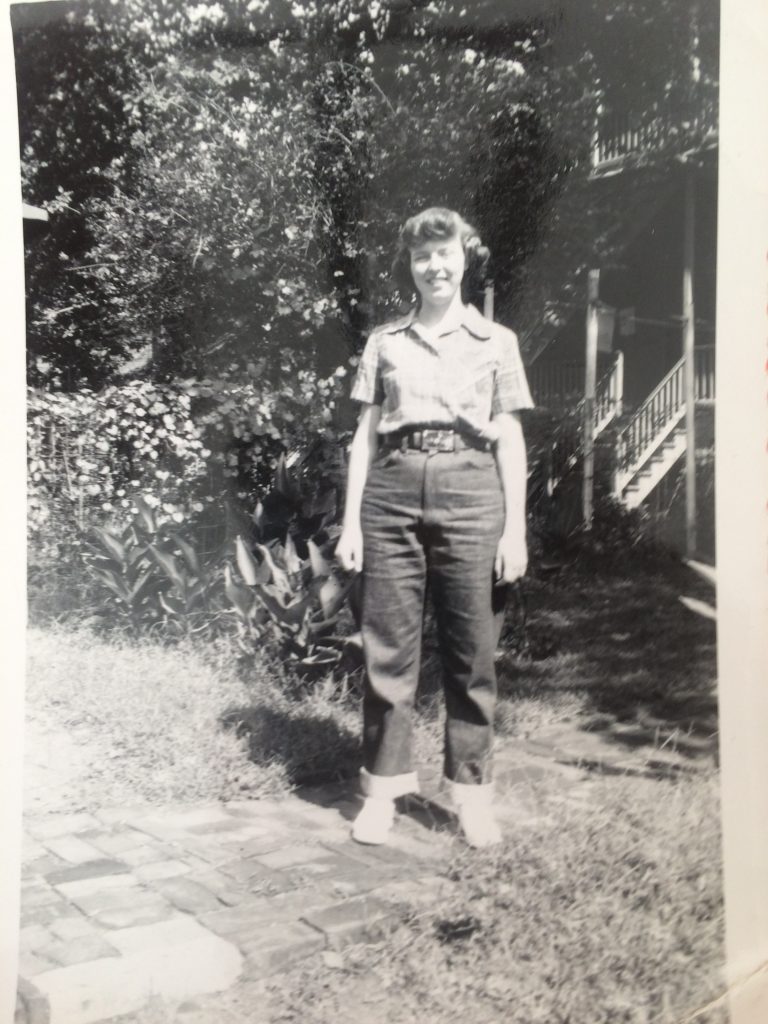
Shirley Hogan in her first pair of jeans, which she bought during her freshman year of college. Photo courtesy of Shirley Hogan.
Fraternities and sororities were present on campus. However, students did not identify themselves as part of these groups by wearing Greek letters, like is commonly seen now. Instead, they would wear the same clothing on certain days to identify themselves as a group.

Delta Zeta sorority in matching corduroy jumpers. Photo courtesy of Shirley Hogan.
Both the student handbooks and the yearbooks of the era are consistently concerned with the appearances of female students. For instance, there are multiple yearbook examples in which women are shown eating at an event, and the caption comments that they should watch their weight.

“Watch your figure girls.” From Echo Yearbook, Northeast Missouri State Teachers College, 1956.
For contrast, here is a picture of men eating at an event. The caption tells us that the boys “eat heartily.” This tells us about standards of beauty to which women were expected to adhere , but men were not. While women were expected to eat little and stay thin, “eating heartily” was more masculine. This shows a pressure on women to be physically small, and men to be large in order to adhere to “correct” gender roles. This is not something that would have been particular to the school, but rather a larger cultural ideal on 1950s America.

“The boys eat heartily at the banquet.” Echo Yearbook, Northeast Missouri State Teachers College, 1954.
Here are a couple examples of the yearbook captions emphasizing the beauty of female students:
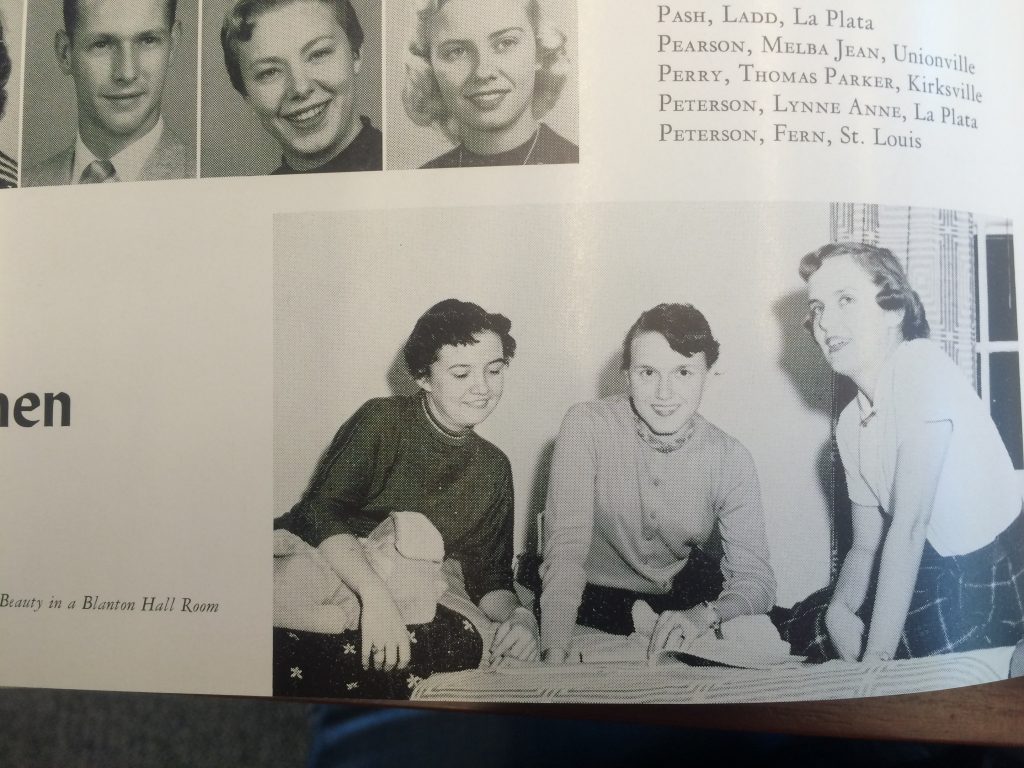
“Beauty in a Blanton Hall room.” Echo Yearbook, Northeast Missouri State Teachers College, 1955.
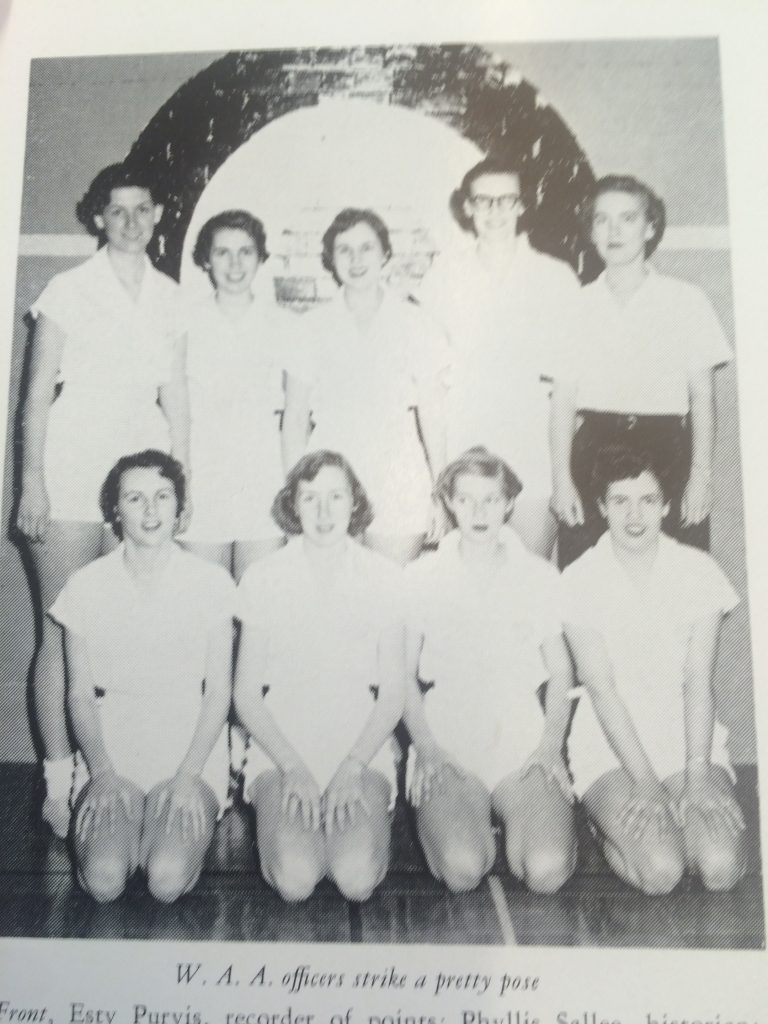
“W.A.A [Women’s Athletic Association} Officers strike a pretty pose.” Echo Yearbook, 1955.

“Overheard at mixer: Where’s that cute little blond?” Echo Yearbook, Northeast Missouri State Teachers College, 1952.

“Freshman discover what a wonderful thing is co-education.” Echo Yearbook, Northeast Missouri State Teachers College, 1952.

“Girl telling room mates about the fellow she’s going with.” Echo Yearbook, Northeast Missouri State Teachers College, 1956.
Much of these ideas continued into the 1960s, as is discussed on the 1960s page on this website. However, over time, there is less explicit emphasis on the appearance of students and their ability to find a spouse.
- Shirley Hogan, interview with Kathryn Hodge, St. Louis, MO, March 15, 2018.
- Hogan, interview with Kathryn Hodge.
- Hogan, interview with Kathryn Hodge.
